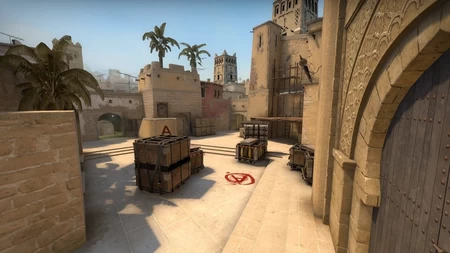Strategic Map Mastery: How to Enhance Team Performance in Virtual Games
In the realm of virtual games, where digital landscapes replace physical environments and team dynamics are orchestrated through screens, mastering the strategic map has become a crucial element for enhancing team performance. Understanding how to effectively navigate and leverage these virtual maps can significantly impact a team’s success in achieving their goals and excelling in their chosen games. To fully grasp this concept, it is essential to explore the key components that contribute to strategic map mastery and its influence on team performance. At its core, strategic map mastery involves a deep understanding of the virtual environment, including its layout, features, and potential strategies. Virtual games often present complex maps with various terrains, obstacles, and points of interest. Teams that invest time in studying and familiarizing themselves with these elements gain a significant advantage. By knowing the map inside out, teams can plan their movements, anticipate opponent actions, and execute strategies with greater precision.

One critical aspect of enhancing team performance through strategic map mastery is communication. In virtual games, where team members may be scattered across different locations, clear and efficient communication becomes paramount. Teams that excel in virtual games often have well-established communication protocols that allow them to share information quickly and accurately. This includes relaying map-related details, such as enemy positions, objectives, and potential hazards. Effective communication ensures that all team members are on the same page and can coordinate their efforts seamlessly, leading to more cohesive and synchronized gameplay. Furthermore, map mastery involves recognizing and utilizing key strategic points within the virtual environment. Many maps feature strategic locations that offer advantages, such as elevated positions, choke points, or resource-rich areas. Teams that identify Mirage Callouts and develop strategies around them can gain a tactical edge over their opponents.
Another important consideration in strategic map mastery is adaptability. Virtual game environments can be dynamic, with maps evolving or changing over time. Teams that remain adaptable and can adjust their strategies based on map alterations or unforeseen developments are better equipped to handle the challenges presented by these changes. Flexibility in adapting to new map layouts or unexpected events allows teams to maintain their competitive edge and respond effectively to shifting conditions. In addition to these elements, practice and experience play a crucial role in mastering the strategic map. Teams that invest time in regular practice sessions and analyze their performance in different scenarios can refine their understanding of the map and improve their overall gameplay. Through continuous learning and adaptation, teams can develop effective strategies, enhance their coordination, and ultimately elevate their performance in virtual games. In summary, strategic map mastery is a vital component of enhancing team performance in virtual games.
